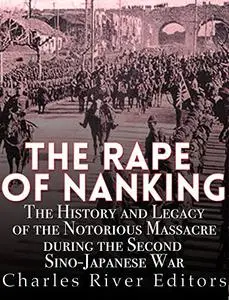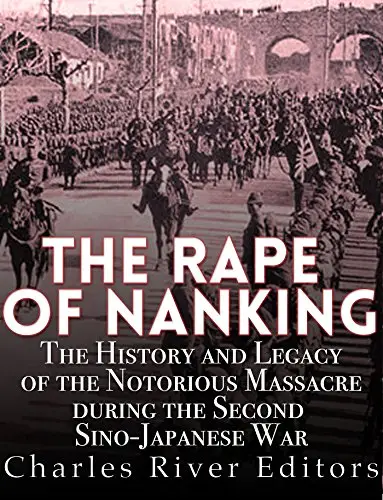The Rape of Nanking: The History and Legacy of the Notorious Massacre during the Second Sino-Japanese War by Charles River Editors
English | January 26, 2016 | ISBN: 1523696257 | 57 pages | EPUB | 0.96 Mb
English | January 26, 2016 | ISBN: 1523696257 | 57 pages | EPUB | 0.96 Mb
*Includes pictures *Includes accounts of the massacre by civilians and Japanese soldiers *Includes online resources and a bibliography for further reading “When you're talking about the Japanese military, thievery and rape just come with the territory. We stabbed them with bayonets, cut open pregnant women and took out the child. I killed five or six of them myself. I used to do some pretty brutal things.” - Kodaira Yoshio, former Japanese soldier (Honda, 2015, 122). “This is the shortest day of the year, but it still contains twenty-four hours of this hell on earth.” - Dr. Robert Wilson, diary entry in Nanking, December 21st, 1937 (Brook, 1999, 219). Three days of plundering traditionally befell cities taken by storm, a fate usually avoided by those surrendering before the first attacking soldier penetrated beyond the outer walls. In Europe and areas influenced by Enlightenment thinkers, this practice faded rapidly after the Napoleonic Wars. In 1937, however, as the Imperial Army of Japan invaded China, this custom returned in a horrifying new form – the Rape of Nanking or the Nanking Massacre, a bloodbath lasting more than six weeks and possibly claiming more than a quarter of a million lives. Even the Japanese participating in the Nanking Massacre provided no rationale for their actions. They made no effort to explain it as a measure to terrorize other Chinese cities into surrender, or even to extract the location of hidden valuables. Instead, the Rape appears on the page of history as a psychopathic orgy of sadism for sadism's sake. Insatiably driven by hatred and, apparently, an unabashed relish for cruelty, the Japanese soldiery abandoned any semblance of restraint. Women of every age, from small children to ancient elders, suffered innumerable rapes, in many cases dying from the mass raping alone. Those who did not die from sexual assault suffered death in other forms – shot, decapitated, or tortured to death once the soldiers found themselves sexually exhausted. Other women suffered fatal sexual torture involving the introduction of sharp foreign objects into their vagina or the placement of firecrackers or live grenades inside. At least one soldier, Kodaira Yoshio, so enjoyed torturing women to death that he returned to Japan as a serial killer, treating his Japanese victims in the same fashion as Chinese women until caught and executed. The Japanese hacked men to death, shot them, used them for live bayonet practice, drowned them, locked them in sheds and burned them, or buried them alive. Even farm animals suffered mutilation, shooting, or burning while locked in their barns. Unburied corpses lay in heaps everywhere, while the Japanese continued to harry and slaughter the survivors for week after week. A choking stench hung over the city in the summer heat. A number of foreign people on the scene attempted to save some of the Chinese from the massacre and, in some cases, succeeded. Their neutral status gave them the ability to move around Nanking without – in most cases – suffering assault or murder by the swarms of Japanese troops glutting themselves endlessly on human pain and death. They also photographed the nearly inconceivable images of bloodshed, creating a stark, permanent record of one of World War II's leading atrocities. Even Third Reich personnel in the city interceded in a sometimes futile effort to rescue victims from their tormentors. At the end of the city's long harrowing, the world knew clearly, if it did not before, that the Japanese of Tojo and Hirohito showed a very different spirit than the exquisitely genteel and chivalric men of the Russo-Japanese War of 1905. The fight against Imperial Japan represented not merely an effort to avoid being conquered, but for survival itself. The Rape of Nanking: The History and Legacy of the Notorious Massacre during the Second Sino-Japanese War chronicles one of the most infamous events of the 20th century.



